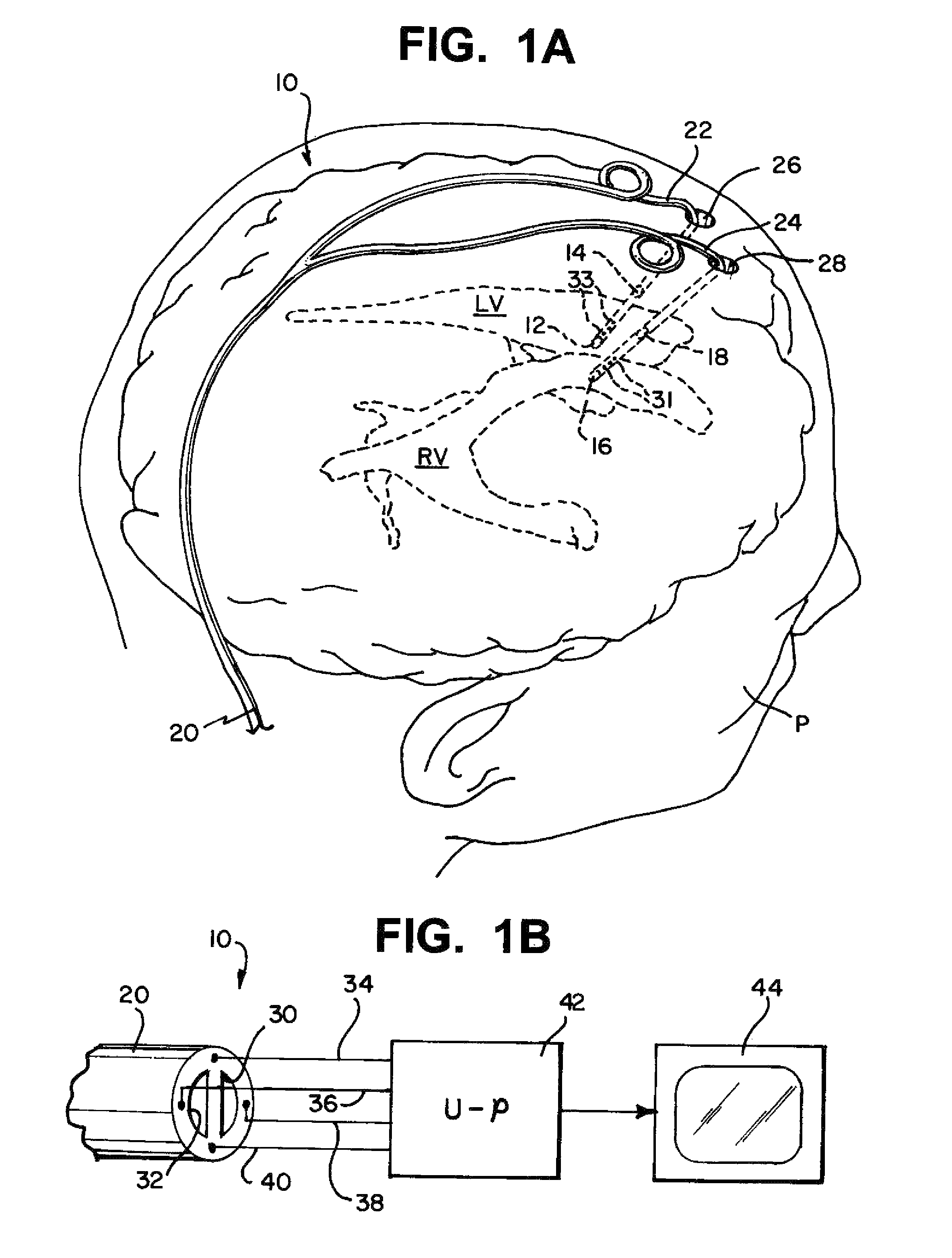Cerebral compliance monitoring
a compliance monitoring and cerebral technology, applied in the field of system and method for monitoring can solve the problems of dramatic and unhealthy increases in intracranial pressure, cerebral fluid brain cannot adapt to any increase in fluid volume, so as to achieve continuous and accurate monitoring of cerebral compliance in a patient
- Summary
- Abstract
- Description
- Claims
- Application Information
AI Technical Summary
Benefits of technology
Problems solved by technology
Method used
Image
Examples
Embodiment Construction
[0035]FIG. 1A illustrates a portion of system 10 according to the present invention having pressure sensors 12 and 14 carried by left branch 22 of catheter 20 and having pressure sensors 16 and 18 carried by right branch 24 of catheter 20 placed below the outermost layer of the dura mater of the meninges surrounding the brain of a patient P. In this construction, left catheter branch 22 passes into the cranium through access burr hole 26 above the left hemisphere and right branch 24 passes through access burr hole 28 above the right hemisphere. Pressure sensor 12 is positioned within left ventricle LV and sensor 16 is positioned in right ventricle RV. Pressure sensors 14 and 18 are positioned in different tissue of the brain parenchyma as described in more detail below.
[0036]FIG. 1B shows another portion of catheter 20 having dual lumens 30 and 32 which are in fluid communication with ventricles LV and RV, FIG. 1A, through inlet holes 31 and 33 near pressure sensors 16 and 12, respe...
PUM
 Login to View More
Login to View More Abstract
Description
Claims
Application Information
 Login to View More
Login to View More - R&D
- Intellectual Property
- Life Sciences
- Materials
- Tech Scout
- Unparalleled Data Quality
- Higher Quality Content
- 60% Fewer Hallucinations
Browse by: Latest US Patents, China's latest patents, Technical Efficacy Thesaurus, Application Domain, Technology Topic, Popular Technical Reports.
© 2025 PatSnap. All rights reserved.Legal|Privacy policy|Modern Slavery Act Transparency Statement|Sitemap|About US| Contact US: help@patsnap.com



